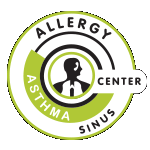The Post-Antibiotic Era: Sinusitis
Dr. John Overholt • December 3, 2018
Appropriate Antibiotic Use: Part III
This post will deal with one of the most common diagnoses seen by allergists: sinusitis. Here are some staggering statistics.
- Sinusitis remains one of the top reasons for seeing a doctor in the U.S., accounting for almost 14 million physician visits annually.
- Overall, 1 in 5 antibiotic prescriptions in the U.S. are written for presumed sinusitis, and most of these are unnecessary.
- Despite studies showing that antibiotics don’t help for acute sinusitis, 86% of patients who sought treatment for acute sinusitis received antibiotics.
...if you're having persistent sinus symptoms or have required antibiotics three or more times in a year, it's time to see an allergist.
So what is sinusitis? Sinusitis is usually taken to mean infection of the sinus cavities. It is broadly divided into acute sinusitis and chronic sinusitis. Acute sinusitis is mostly due to the common cold virus (rhinovirus) and can present with low-grade fever, pain, pressure, and discolored secretions. It usually lasts 7-10 days and resolves on its own. Bacterial infections complicate less than 5% of cases of acute sinusitis. Chronic sinusitis can present with similar symptoms, though they are usually less severe, and also may cause significant fatigue, cough and occasionally drainage. Unlike acute sinusitis, it is frequently bacterial.
The biggest problem in managing chronic sinusitis is making a diagnosis. The symptoms are non-specific and don’t correlate well with the gold standard diagnostic test, a sinus CT. Indeed, the exact same symptoms can be infectious, allergic, both or neither. This illustrates the importance of allergy testing and sinus imaging in the management of chronic sinusitis. In general, if you’re having persistent sinus symptoms or have required antibiotics three or more times in a year, it’s time to see an allergist. They can find out precisely what’s wrong with you and come up with a treatment plan to get you better.




